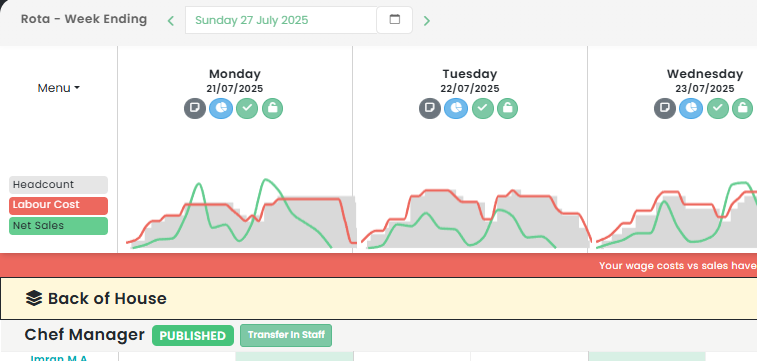Boosting Your Success: Unveiling the Average Net Profit for a Restaurant and Strategies to Increase Profitability in the Hospitality Industry
Stay informed with industry news, tips, and practical guides for hospitality professionals.
Average Net Profit for a Restaurant: Understanding the Figures
The profitability of a restaurant is a key concern for anyone involved in the hospitality industry. In the United Kingdom, the restaurant business is known to be competitive and challenging, but also potentially rewarding. This article aims to shed light on the average net profit for a restaurant, key factors influencing profitability, and strategies for maximising earnings and revenue.
Demystifying Restaurant Profitability
Restaurant profitability is calculated by subtracting total costs from total revenue. To run a successful restaurant business, it is essential to understand the factors that impact these numbers.
The average net profit for a restaurant varies significantly based on factors such as location, cuisine, pricing, and management efficiency. In the UK, a well-run restaurant might expect a net profit margin between 5% and 15%, but this can fluctuate widely.
Restaurant Earnings and Revenue: The Key Metrics
Restaurant revenue refers to the total income generated by the business before expenses are deducted. It is largely determined by factors such as the number of covers, average spend per customer, and the number of operating hours.
Restaurant earnings, on the other hand, refer to the net income of a restaurant after all expenses, including costs of goods sold (COGS), labour costs, overheads, and taxes, have been deducted from the revenue. It is a more accurate reflection of the restaurant's financial performance and profitability.
Maximising Restaurant Profits
Improving restaurant profitability involves increasing revenue and/or decreasing costs. Here are a few strategies to consider:
- Menu Engineering: Design your menu strategically to promote high-margin dishes and drinks. This can improve both revenue and profit margin.
- Inventory Management: Effective management of inventory can help reduce waste and lower COGS, thereby improving profitability.
- Staff Training: Well-trained staff can increase efficiency, improve customer experience, and thereby boost revenue.
Profitability in the Hospitality Industry: A Broader Perspective
While the focus here is on restaurant profitability, it's important to note that profitability in the hospitality industry as a whole encompasses many other types of businesses, including hotels, bars, and event venues. Each of these businesses has its own unique set of profitability metrics and strategies.
However, the principles of maximizing profits—increasing revenue, reducing costs, and managing efficiently—are common across all sectors of the industry.
Conclusion
Understanding the average net profit for a restaurant and the factors that influence it is crucial for anyone looking to succeed in the hospitality industry. By focusing on both revenue generation and cost reduction, restaurant owners and managers can significantly improve their restaurant's financial performance and profitability.
Regardless of the challenges, the potential for profitability makes the restaurant business an attractive proposition for many entrepreneurs in the UK. With careful planning, diligent management, and a relentless focus on customer satisfaction, it is possible to run a successful restaurant business that delivers robust profits.
Ready to simplify hospitality ops?
We’ve got you.
Speak with an Opsyte expert to see how we help:
- Save hours on staff scheduling and rota planning
- Automate invoice processing and financial insights
- Track live labour costs vs sales in real-time
- Get fast answers and support from real humans
- Automate your P&Ls

“Opsyte transformed our entire back office. Game changer.”
Read articles from our hospitality experts
-
Unveiling the Secrets to Successful Restaurant Business: Understanding Average Profit Margins and Boosting Restaurant Revenue
What is the Average Profit Margin for Restaurants?Understanding the average profit margin for restaurants is vital for anyone involved in the restaurant business. It provides a clear picture of the…...
-
Mastering the Art of Dining: Comprehensive Strategies to Improve Your Restaurant - From Management to Customer Service, Marketing and Beyond
How to Improve Your Restaurant: A Comprehensive GuideIn the highly competitive hospitality industry, improving your restaurant takes more than just a passion for food. It involves a careful balance of…...
-
Leveraging the QSR Industry: Understanding Fast Food Trends, Strategies, and Growth in the Hospitality Business
Understanding the QSR Industry in the UK Hospitality LandscapeThe Quick Service Restaurant (QSR) industry, commonly referred to as the fast food industry, is a significant component of the UK's hospitality…...
-
Maximising QSR Services: An Insight into Trends, Technology, and Growth Strategies in the Fast Food Industry
Embracing the Future of QSR Services in the UK: A Comprehensive AnalysisIn the ever-evolving landscape of the UK hospitality industry, Quick Service Restaurants (QSR services) have emerged as a pivotal…...
-
Unlocking the Secrets of Profitability: An In-depth Analysis of Average Restaurant Profit Margins in the Hospitality Industry
Understanding the Average Restaurant Profit Margin in the UK Hospitality IndustryThe restaurant industry forms a significant fraction of the UK's hospitality industry. As an industry that's intrinsically linked to consumer…...
-
Boosting Your Business: Innovative Bar Promotional Ideas and Marketing Strategies to Increase Sales and Traffic
10 Innovative Bar Promotional Ideas to Boost Your BusinessThe UK's hospitality industry is a vibrant and competitive space with bars and pubs at its heart. As a bar owner or…...
